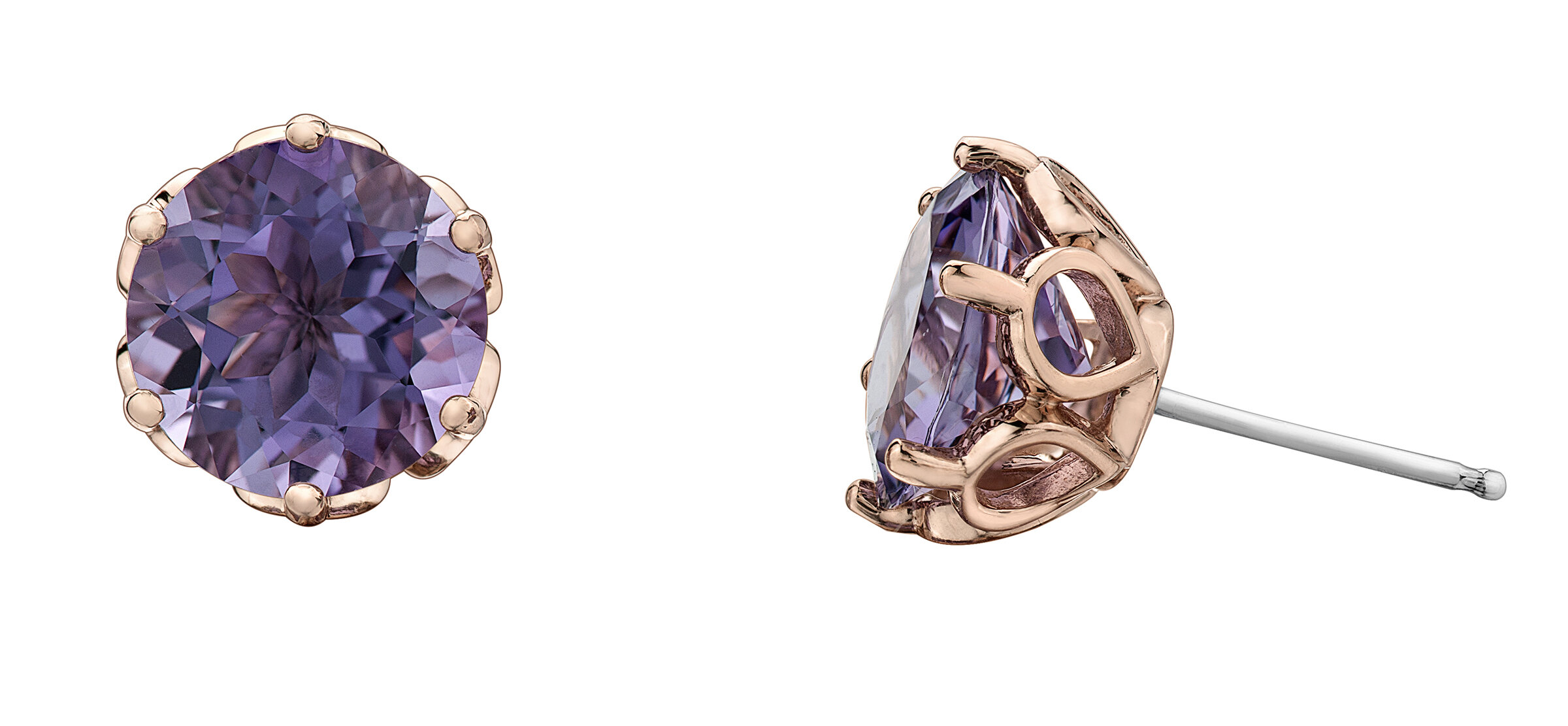The February Birthstone-Amethyst
There is really no question in people's minds when it comes to the February birthstone - it is most decidedly amethyst, a gemstone synonymous with purple. This variety of quartz was once highly prized and often valued above ruby and emerald. In fact, amethyst was known in the ancient world as one of the five cardinal gemstones: diamond, emerald, ruby, sapphire, and amethyst. During the 19th century, large amethyst deposits were found in Brazil and continue to produce an abundance of gemstone quality amethyst today.
Though this supply has decreased the price of amethyst, it has not diminished its beauty, and amethyst remains the most sought after variety of quartz. It has broad appeal due to its color range, and its durability makes it an excellent choice for February birthstone jewelry and ornaments.
What is the color of the February birthstone?
Like many of the most well-known gemstones, amethyst's name is used to refer to a specific color frequency between purple and violet. There is more to this February birthstone's color palette, though. The hue (all the colors on the color wheel) and tone (lightness or darkness of the hue) of amethyst vary quite a bit, actually. It can range primarily from a light pinkish violet to a deep purple, with hues of red and blue sometimes occurring, as well.
These colors can be so light and subtle that they are nearly indistinguishable, or so dark that they make the gemstone opaque. The lighter toned amethysts make their way to commercial production of jewellery for the mass market, while the premium reddish purple color is reserved for high-end, designer jewellery.
What is the spiritual meaning of amethyst?
If we begin with amethyst's most characteristic color - purple - we will find connections to mystery, magic, power, and luxury. Purple contains the energy and strength of red, as well as the spirituality and integrity of blue; it symbolizes the union of body and soul, creating a balance of our physical and spiritual beings.
Healing Properties and Health Benefits of Amethyst
Often called 'nature's tranquilizer', amethyst can soothe the mind of hyperactive children and those suffering from obsessive compulsive disorders. The February birthstone can also cure insomnia and encourage pleasant dreams.
Regarding the physical body, the February birthstone optimizes the endocrine glands and their production of hormones, while stimulating the sympathetic nervous system (the 'fight-or-flight' response), as well. Amethyst also strengthens the immune system, supports oxygenation of the blood, reduces inflammation and related conditions (arthritis, especially), and aids in the treatment of the heart, digestive system, and skin.
The February birthstone is also used to treat and cure ailments of the ethereal body. It offers psychic healing and protection of the energy field that exists around every being. Amethyst does this spiritual cleansing and removes the darkness, while leaving a shield of positivity and light in its place.
Imbalance and disease are not only caused by environmental factors, but they are provoked by one's negative thoughts and emotional patterns. The February birthstone is useful in the identification of these damaging mental pathogens.
Amethyst's connection to the higher self of wisdom and spiritual understanding, make it an excellent healing crystal for those who are grieving the loss of a loved one. The February birthstone encourages the release of sorrow by empowering one to understand that death is merely a transition of the spirit, now free from the physical body.
Cleaning and Caring for Amethyst
The February birthstone is safely, simply, and effectively cleaned with warm soapy water and a soft brush, such as a toothbrush. Ultrasonic cleaners may be used to clean amethyst, except in the very rare case that it has been dyed or fracture-filled. Be aware: ultrasonic cleaners can not only cause and exacerbate fractures in gemstones, they can loosen jewelry and cause gems to fall out of their settings. Steam cleaners should not be used to clean amethyst because it should not be subjected to high temperatures.
Amethyst is durable enough to survive the odd bump or knock on a hard surface; however, you should always take care to avoid such abuse. That is why it is always recommended to remove jewelry before physical activities, especially household cleaning or gardening.












